In his introduction to the reprint of ‘Salem’s Lot, Stephen King explains that he was, and remains a “writer of the moment”, which means that his characters, and the themes in his books, often reflects the ages in which they were written, even though their themes may be timeless. In a recent report from UNESCO, Stephen King was the 9th most-translated author worldwide. The man who occupies the #2 spot on that list is a writer much like King…his writing reflects his world, yet imagines a world altogether new. That man is today’s celebrant: Jules Gabriel Verne, born this day in 1828.
Verne was always an adventurer, and ever the dreamer. Family legend has it that when he was eleven, Jules got himself hired as a cabin boy on a ship bound for the West Indies, so that he could procure a coral necklace for his cousin, Caroline. His father made it to the docks in time to catch his son, and made him promise that, thereafter, he would travel “only in his imagination”.
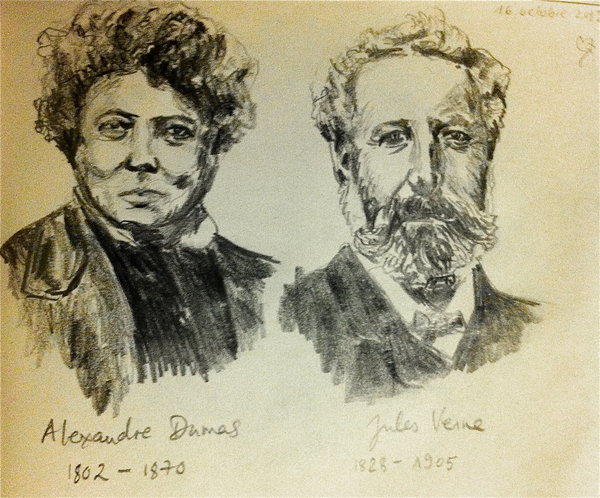 Verne always loved storytelling, but, as the oldest son of the family, it was expected that we would take a position in the family law firm, rather than try to make a living through his writing. And Jules was truly dedicated to his work, writing furiously only after finishing his studies. But in 1849, he met with Alexander Dumas, and together, the two young men wrote and produced a play called Les Pailles rompues (The Broken Straws), which debuted at the Théâtre Historique in Paris, on June 12, 1850. As his literary successes continued on the stage and in popular magazines, Jules quickly realized that he would only make an indifferent lawyer, at best. Though he would later get a job in a brokerage in order to win favor with his fiancee’s family, Verne’s lifelong passion would be for writing.
Verne always loved storytelling, but, as the oldest son of the family, it was expected that we would take a position in the family law firm, rather than try to make a living through his writing. And Jules was truly dedicated to his work, writing furiously only after finishing his studies. But in 1849, he met with Alexander Dumas, and together, the two young men wrote and produced a play called Les Pailles rompues (The Broken Straws), which debuted at the Théâtre Historique in Paris, on June 12, 1850. As his literary successes continued on the stage and in popular magazines, Jules quickly realized that he would only make an indifferent lawyer, at best. Though he would later get a job in a brokerage in order to win favor with his fiancee’s family, Verne’s lifelong passion would be for writing.
 One of Jules’ favorite places to work was the Bibliothèque nationale de France (yay libraries!), where he kept up-to-date on the latest scientific and geographical discoveries that were being produced by French cartographers and explorers. This research got him thinking of writing a new kind of novel–a Roman de la Science (novel of science)–that would allow him to incorporate the wealth of facts he was collecting, while still allowing to put his prodigious imagination to good use.
One of Jules’ favorite places to work was the Bibliothèque nationale de France (yay libraries!), where he kept up-to-date on the latest scientific and geographical discoveries that were being produced by French cartographers and explorers. This research got him thinking of writing a new kind of novel–a Roman de la Science (novel of science)–that would allow him to incorporate the wealth of facts he was collecting, while still allowing to put his prodigious imagination to good use.
Those novels came to life following Verne’s meeting with Pierre-Jules Hetzel, who was intending to publish a family magazine that would combine scientific information with fun adventure stories. Verne’s “novels of science” were a perfect addition, and Hetzel presented Verne with a contract stating that he would pay a yearly flat fee, and, in return, Verne would produce three novels a year for his magazine. Verne was delighted to find a steady outlet for his writings, and his first novel of science, now known as Five Weeks in a Balloon was published in January, 1863.
Though his work was enormously popular during his life, Verne’s work has always been the focus of a debate that still rages today…can science fiction be considered “literature”, or must it always be relegated to “genre fiction”? For years, Verne’s work was discounted, but a number of scholarly works published in France around the 1960’s and 1970’s brought his work back into the forefront of French literature.
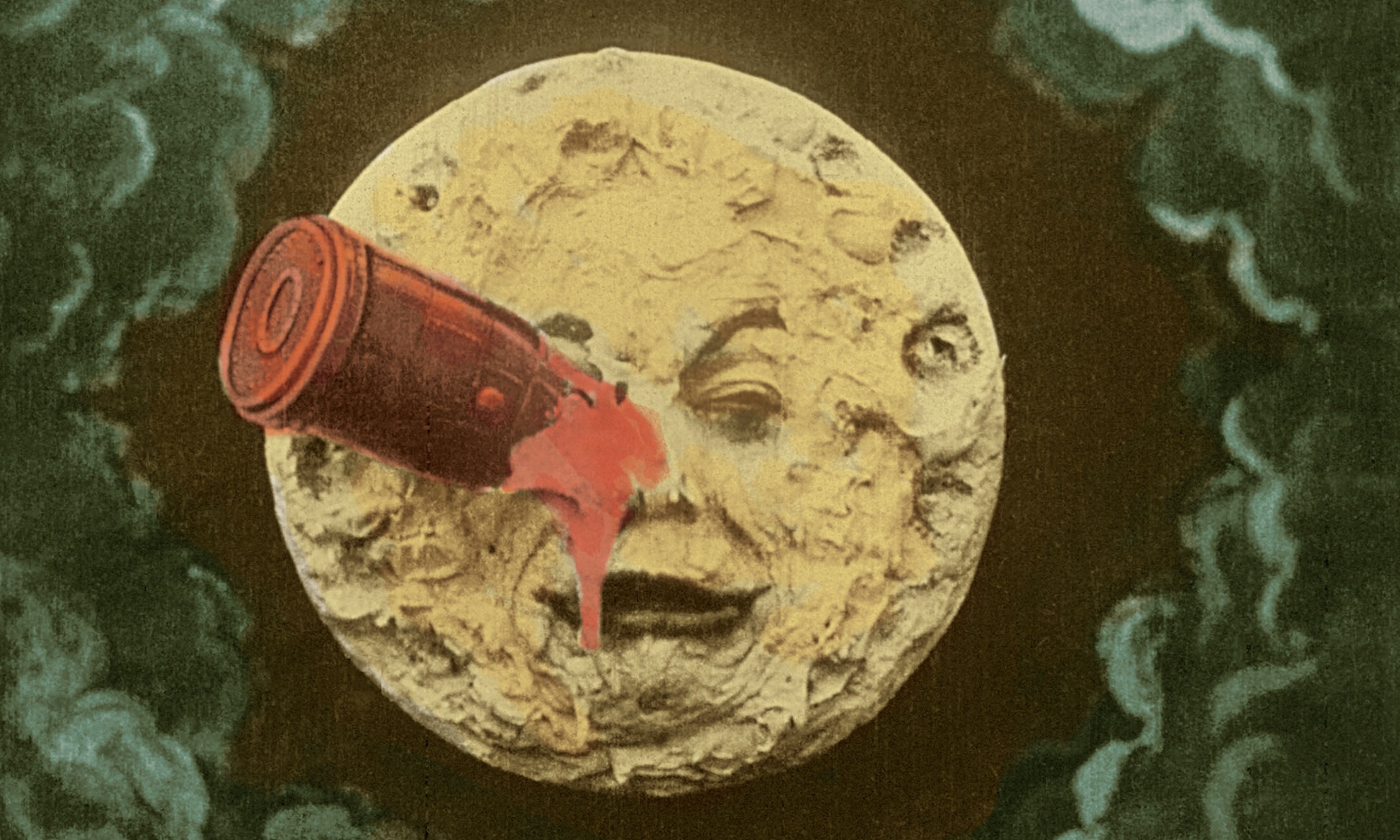
In English, though, Verne hasn’t made the same kind of triumphant return. This is largely due to the fact that traditional translations of his work have been, generally speaking, pretty lousy. During Verne’s lifetime, British and American publisher decided to market his work to young audiences, and thus scaled down a lot of his ideas, and edited out a good deal of the words, as well. As Michael Crichton pointed out in an introduction to Verne’s work, in the publication of Journey to the Center of the Earth, “Griffith & Farran…blithely altered the text, giving Verne’s characters new names, and adding whole pages of their own invention, thus effectively obliterating the meaning and tone of Verne’s original.”
So perhaps today is as good a day as any to rediscover Jules Verne is all his true, wise, and insightful glory. Recently, several publishing houses have begun to reassess Jules Verne and his work, giving Anglophones a new taste of his work. Here are a few that have been widely hailed as rather good translations that will allow you to access all the weird and wild wonder of his work:
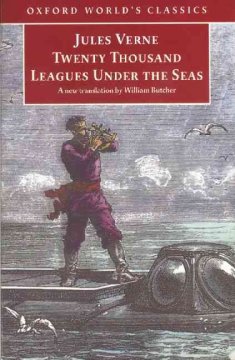 Twenty Thousand Leagues Under the Sea: Oxford World’s Classics are an excellent way to get to know some of the planet’s greatest works of literature, and these new translations by William Butcher actually go back to the original manuscript in order to get at the heart of Verne’s work, rather than relying on previous tradition. Here, Captain Nero and his submarine the Nautilus appear as wild and colorful as they first did in 1870.
Twenty Thousand Leagues Under the Sea: Oxford World’s Classics are an excellent way to get to know some of the planet’s greatest works of literature, and these new translations by William Butcher actually go back to the original manuscript in order to get at the heart of Verne’s work, rather than relying on previous tradition. Here, Captain Nero and his submarine the Nautilus appear as wild and colorful as they first did in 1870.
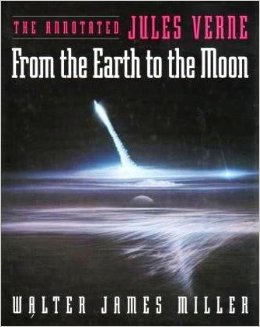 From the Earth to the Moon: Walter James Miller translated and annotated this 1865 novel set in Maryland just after the American Civil War, when the Baltimore Gun Club decides to build a massive gun, pointing to the sky, in order to shoot the club’s president and a French poet to the moon. This work was an enormous influence on H.G. Wells, and now, you can discover it, as well, with excellent annotations, to boot! Miller also translated and annotated 20,000 Leagues Under the Sea, as well.
From the Earth to the Moon: Walter James Miller translated and annotated this 1865 novel set in Maryland just after the American Civil War, when the Baltimore Gun Club decides to build a massive gun, pointing to the sky, in order to shoot the club’s president and a French poet to the moon. This work was an enormous influence on H.G. Wells, and now, you can discover it, as well, with excellent annotations, to boot! Miller also translated and annotated 20,000 Leagues Under the Sea, as well.
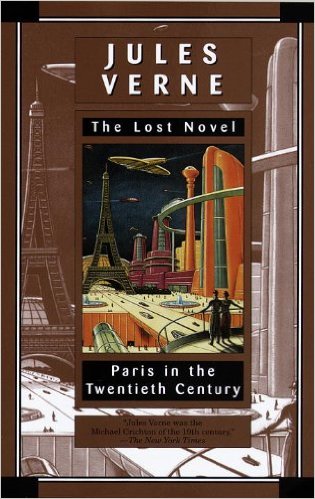 Paris in the Twentieth Century: This novel was discovered by Verne’s great-grandson in 1989. It had originally been turned down by Hetzel as being too pessimistic, as well and, comparatively, unimaginative. Today, however, it is recognized by Verne scholars as a massively important work, and by science fiction aficionados as a marvel–none of Verne’s other works went so far as to prophesy the future of an entire civilization so comprehensively, or to include so many ideas about how science would change human society.
Paris in the Twentieth Century: This novel was discovered by Verne’s great-grandson in 1989. It had originally been turned down by Hetzel as being too pessimistic, as well and, comparatively, unimaginative. Today, however, it is recognized by Verne scholars as a massively important work, and by science fiction aficionados as a marvel–none of Verne’s other works went so far as to prophesy the future of an entire civilization so comprehensively, or to include so many ideas about how science would change human society.
Oh, and just in case you were wondering, here’s a fun piece from National Geographic discussing eight inventions that Jules Verne accurately predicted in his writings. Enjoy!

